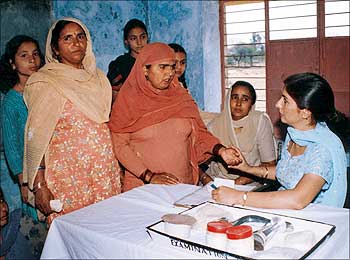
India
The Gender Gap Review reveals India's dismal position. Out of 134 countres surveyed, India is among the lowest ranked countries at the 114th position.
Only 14 per cent of the companies surveyed, have 40 per cent or more women among their employees. These women employees are mainly present at the entry and middle levels of management, while very few women attain senior management level.
Most companies do not track salary gaps, despite the clear wage gaps between women and men only 4 per cent of the companies surveyed are attempting to monitor salary gaps."Women, as half of the human capital of India, will need to be more efficiently integrated into the economy in order to boost India's long-term competitive potential. The World Economic Forum's survey of some of the biggest companies in India shows that, to achieve this integration, Indian companies will need to set targets, improve policies to close salary gaps and promote work-life balance," said Saadia Zahidi, co-author of the Forum's Global Gender Gap Report 2009.
India has closed 93 per cent of its health gender gap, 84 per cent of its education gap, 41 per cent of its economic participation gap and 27 per cent of the political empowerment gender gap according to The Global Gender Gap Report 2009. India's middle class will see rapid growth off a very low base, but the shifts in spending that we outline are likely to remain constrained by women's relatively low status, at least for the next 10 to 15 years.
India holds last place among the BRIC countries on the Index, behind Russia (51), China (60) and Brazil (82). In South Asia, the sub-continent is in second-to-last place behind Sri Lanka and Bangladesh and ahead of Pakistan. Sri Lanka leads in the rankings by far, holding 16th position, followed by Bangladesh (94), Maldives (100), Nepal (110).
The Global Gender Gap Index examines the gap between men and women in four fundamental categories: economic participation and opportunity, educational attainment, political empowerment and health and survival.Economic Participation and Opportunity: 0.412 (Rank 127)
Educational Attainment: 0.843 (Rank 121)
Health and Survival: 0.931 (Rank 131)
Political Empowerment: 0.273 (Rank 24)
Ability of women to rise to enterprise leadership: 4.84
Survey data, responses on a 1-to-7 scale (1 = worst score, 7 = best score) Data on a 0-to-1 scale (1 = worst score, 0 = best score) In the case of all subindexes, the highest possible score is 1 (equality) and the lowest possible score is 0 (inequality), thus binding the scores between inequality and equality benchmarks.
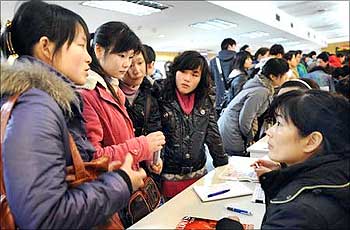
China is ranked at 60 in the Gender Gap Index 2009 with a score of 0.691. While China has slipped three places in the rankings, its absolute scores in economic participation and opportunity and educational attainment as well as health and survival has increased.
However, China continues to be one of the lowest-ranking countries on the health and survival subindex (130), the result of a disproportionate sex ratio at birth that contributes to China's "missing women" phenomenon.
The study predicts that over the next five years, the effects of the growing power of the purse will be seen most clearly in China and Russia, and to a lesser extent in Vietnam, Mexico, Brazil and Indonesia. In the subsequent decade (2015 25), these dynamics are likely to remain strong in Mexico and Russia, and to continue to strengthen in China, Indonesia, Vietnam, India and the Philippines.
Economic Participation and Opportunity: 0.696 (Rank 38)
Educational Attainment: 0.980 (Rank 87)
Political Empowerment: 0.141(Rank 60)
Ability of women to rise to enterprise leadership: 4.78
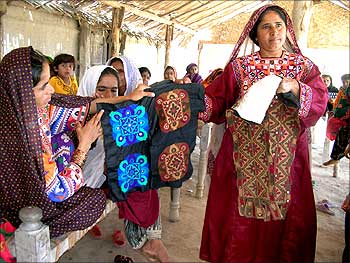
In the current situation, when funds are limited and resources must be used as efficiently as possible, it is worth considering investments or policies that are likely to bring the greatest returns. Investing in girls' education has significant multiplier effects on family incomes, infant and child health, maternal mortality and community well-being.
Investing in girls'education remains one of the highest return investments that a developing economy can make and, in the current environment, may be among the best use of limited funds.
Economic Participation and Opportunity: 0.340 (Rank: 132)
Educational Attainment: 0.747 (Rank: 128)
Health and Survival: 0.950 (Rank: 128)
Political Empowerment: 0.146(Rank: 55)

These losses offset the gains made in the estimated earned income of women and the percentage of women among legislators, senior officials and managers. The overall score of the United States in political empowerment remained the same.
In some countries, the employment gap has been rising, with the biggest rise found in the United States. Motherhood has not been a universal obstacle for female labour force participation. In almost half the countries studied, women with three children work at least as much as women with no children.
However, in other countries, especially in Latin America, the motherhood gap is very large, with Chile exhibiting the largest gap. But there is good news: the motherhood gap has been falling in almost two-thirds of the countries, with the biggest reductions shown again by Brazil and Greece, accompanied by Austria and Bolivia.
Economic Participation and Opportunity: 0.750 (Rank 17)
Educational Attainment: 1.0 (Rank 1)
Health and Survival: 0.979 (Rank 40)
Political Empowerment: 0.140 (Rank 61)
Ability of women to rise to enterprise leadership: 5.01

The United Kingdom scores 0.740 to stand at the 15th position. Six European countries are among the 10 highest ranked countries in the world, and 13 are among the top 20.
These include the Netherlands (11), Germany (12), Switzerland (13), Latvia (14), the United Kingdom (15), Spain (17) and France (18), in addition to the five Nordic countries and Ireland.
The United Kingdom also slides in the rankings for the fourth consecutive year, moving from 13th place last year to 15th position in the 2009 ranking.
The current economic participation of women, even in countries where they are as healthy and as educated as men, is far from optimal.
Talent and human capital are fundamental to economic growth - ensuring that barriers to women's entry to the workforce are removed and that equal opportunities are provided for rising to positions of leadership within companies are among the key factors for business leaders and policy-makers to consider to ensure that all existing resources are used in the most efficient manner and to send the right signals to ensure the optimal flow of future talent.
Economic Participation and Opportunity: 0.706 (Rank 35)
Educational Attainment: 1.0 (Rank 1)
Health and Survival: 0.974 (Rank 72)
Political Empowerment: 0.280 (Rank 22)
Check out the top 10 countries in the index...

The four Nordic countries that have consistently held the highest positions in previous editions of the Global Gender Gap Index continue to flourish, but the top rankings have been reallocated.
Iceland is at the top spot with a score of 0.828. Iceland, previously in fourth position, leaps forward this year to hold the number one spot in the 2009 rankings, becoming the country with the narrowest gender gap in the world.
Iceland's improvement is characterised by small improvements in the economic participation and opportunity, educational attainment and political empowerment subindexes, resulting in a marked increase in the overall score.
The percentage of women in parliament increased from 33 per cent to 43 per cent and income and labour force participation gaps narrowed.
Economic Participation and Opportunity: 0.750 (Rank 16)2. Finland
Finland remains in 2nd position with a score of 0.825, while improving its overall score. Finland continues to hold the number one spot on the health and survival and educational attainment subindexes but loses ground to Iceland on political empowerment despite the continued tenure of Tarja Halonen as Finland's first female president.
Norway's scores regressed for the first time in four years, causing it to lose the number one spot.
While the percentage of women among professional and technical workers has tilted in favour of women - women now hold 51 per cent of all such positions in the country- the percentage of women among legislator, senior official and managerial positions has slipped from 34 per cent to 32 per cent according to the latest data available.
Economic Participation and Opportunity: 0.750 (Rank 15)
Educational Attainment: 1.0 (Rank 1)
Health and Survival: 0.980 (Rank 1)
Political Empowerment: 0.571 (Rank 2)

Norway with a score of 0.823 comes third. The three highest ranking countries - Iceland, Finland and Norway have closed a little over 80 per cent of their gender gaps, while the lowest ranking country - Yemen - has closed only around 46 per cent of its gender gap.
Economic Participation and Opportunity: 0.779 (Rank 8)
Educational Attainment: 1.000 (Rank 26)
Health and Survival: 0.979 (Rank 56)
Political Empowerment: 0.533 (Rank 3)
Ability of women to rise to enterprise leadership: 5.75
4. Sweden
With an impressive score of 0.814, Sweden held the held the number one spot in 2006 and 2007, but since its gap is neither narrowing nor widening while other countries improve, last year it fell behind both Norway and Finland to 3rd place, and this year it loses one more rank to Iceland.
While no country has yet achieved gender equality, all of the Nordic countries, with the exception of Denmark, have closed over 80 per cent of the gender gap and thus serve as models and useful benchmarks for international comparisons.
Economic Participation and Opportunity: 0.785 (Rank 6)
Educational Attainment: 0.998 (Rank 39)
Health and Survival: 0.974 (Rank 79)
Political Empowerment: 0.499 (Rank 4)
Ability of women to rise to enterprise leadership: 5.23
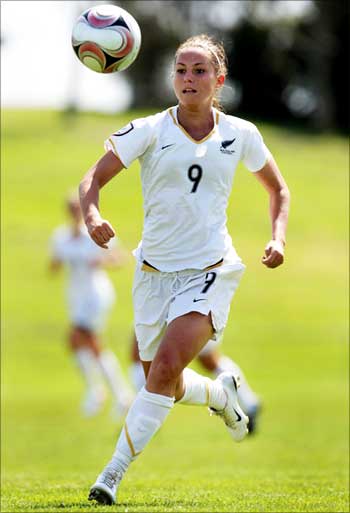
New Zealand with a score of 0.788, retains its privileged position in the rankings while showing an absolute increase in scores for economic participation (7) and political empowerment (7).
Economic Participation and Opportunity: 0.784 (Rank 7)
Educational Attainment: 1.0 (Rank 1)
Health and Survival: 0.974 (Rank 72)
Political Empowerment: 0.393 (Rank 7)
Ability of women to rise to enterprise leadership: 5.54
6. South Africa
South Africa with a score of 0.771 has made great strides in narrowing its gender gaps to enter the top 10.The latest data reveal that South Africa makes significant improvements in female labour force participation in addition to gains for women in parliament and in ministerial positions in the new government
Economic Participation and Opportunity: 0.663 (Rank 61)
Educational Attainment: 0.996 (Rank 43)
Health and Survival: 0.975(Rank 70)
Political Empowerment: 0.449 (Rank 5)
Ability of women to rise to enterprise leadership: 4.93
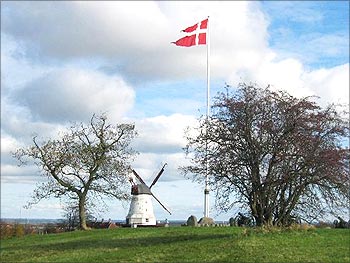
Denmark continues to hold a place among the top 10, rounding off the Nordic countries' record as top performers with a score of 0.763.
Economic Participation and Opportunity: 0.748 (Rank 20)
Educational Attainment 1 1.000 (Rank 1)
Health and Survival: 0.970 (Rank 102)
Political Empowerment: 0.334 (Rank 11)
Ability of women to rise to enterprise leadership: 5.38
8. Ireland
Ireland has improved its performance with a score of 0.760 relative to its own score in previous years.
Economic Participation and Opportunity: 0.692 (Rank 43)
Educational Attainment: 1.0 (Rank 1)
Health and Survival: 0.973 (Rank 86)
Political Empowerment: 0.374 (Rank 8)
Ability of women to rise to enterprise leadership: 5.05
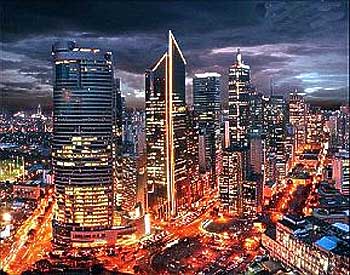
The Philippines also retains its privileged status in the top 10 as the highest-ranking Asian country with a score of 0.758, but for the first time in four years it slipped in the rankings to the 9th position.
Economic Participation and Opportunity: 0.760 (Rank 11)
Educational Attainment: 1.0 (Rank 1)
Health and Survival: 0.980 (Rank 1)
Political Empowerment: 0.291 (Rank 19)
Ability of women to rise to enterprise leadership: 5.67
10. Lesotho
Lesotho climbs six places to enter the top 10 for the first time with a score of 0.750, driven by large gains in the labour force participation of women and narrowing wage gaps, according to the latest data. Netherlands and Latvia, last year at 9th and 10th positions respectively, drop out of the top 10.
Economic Participation and Opportunity: 0.801 (Rank 4)
Educational Attainment: 1.0 (Rank 1)
Health and Survival: 0.980 (Rank 1)
Political Empowerment: 0.217 (Rank 34)
Ability of women to rise to enterprise leadership: 5.18